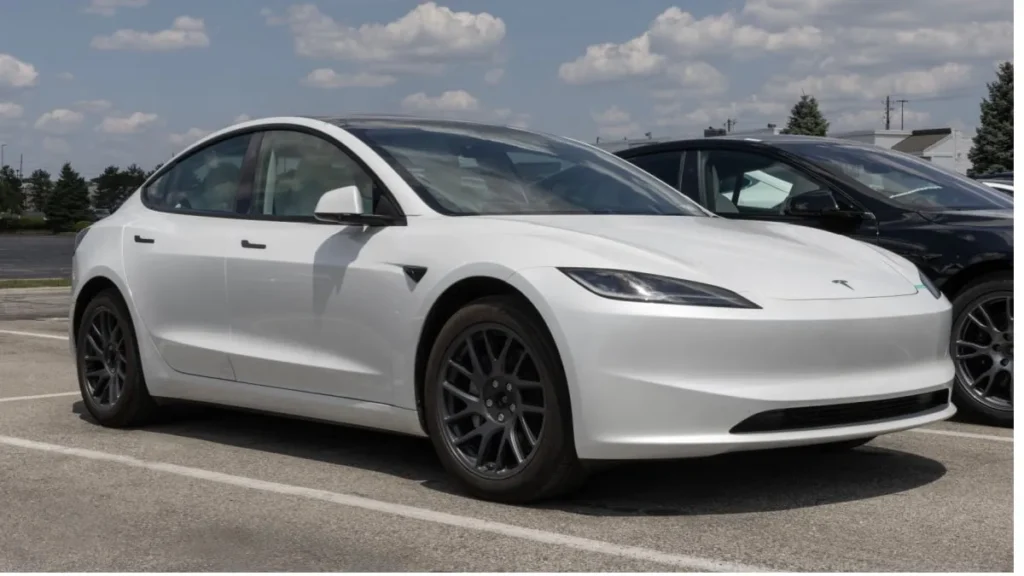Tesla Launches Cheaper Cars: A Strategic Shift in the EV Market
Tesla launches cheaper cars as part of a renewed strategy to maintain its dominance in the electric vehicle (EV) industry while adapting to changing market conditions. The new standard versions of its top-selling Model 3 sedan and Model Y sport utility vehicle (SUV) are now priced under $40,000 (R689,800), marking a significant milestone in Tesla’s push for affordability and accessibility.
Affordable Electric Cars to Broaden Market Reach
Tesla’s new models, priced at $36,990 (R637,800) for the Model 3 and $39,990 (R689,800) for the Model Y, represent price reductions of about 13% and 11%, respectively, compared to their premium counterparts. This move positions Tesla to compete more aggressively with rising rivals in the affordable EV segment, especially after the expiration of US federal tax credits worth up to $7,500.
By introducing cheaper models, Tesla aims to retain customers who might otherwise be discouraged by rising EV costs and a tightening economy. The company’s decision signals a shift toward practical value rather than luxury appeal — a move that could redefine EV market trends globally.
Elon Musk’s Strategy and Vision for Tesla’s Future
CEO Elon Musk’s strategy remains focused not just on selling cars but on transforming Tesla into a technology powerhouse. Musk has publicly emphasized Tesla’s pivot toward autonomous driving technology and humanoid robotics, seeing cars as the financial foundation for these long-term projects.
“The cars are increasingly just the cash engine for Tesla’s real pivot: autonomy and robotics,” said Shay Boloor, chief market strategist at Futurum Equities. This reflects Tesla’s broader vision — to become the driving force behind automation and AI innovation.
Market Reaction: Tesla Shares and Investor Sentiment
Following the announcement, Tesla’s stock fell 4.4%, reversing gains from the previous day that were fueled by speculation around the company’s upcoming projects. Despite this dip, Tesla shares remain up over 7% for the year, showing that investor confidence in the brand’s future remains relatively strong.
Analysts, however, caution that the company faces real challenges in sustaining growth. Chief Financial Officer Vaibhav Taneja noted during Tesla’s latest earnings call that while production of the new affordable models began in June, output would ramp up slower than initially planned due to shifting global demand and supply chain complexities.
Tesla’s New Models: What Buyers Can Expect
While Tesla’s cheaper cars are more accessible, they come with fewer features. The models have reduced battery range and lack certain interior upgrades such as ambient lighting and a second-row entertainment screen. Despite these trade-offs, the vehicles still offer Tesla’s core strengths — performance, safety, and access to its growing Supercharger network.
These models are expected to appeal to budget-conscious consumers seeking entry into the EV market without sacrificing Tesla’s innovative technology and brand prestige.
The Global EV Market and Economic Pressures
The release of Tesla’s new models comes at a time when global EV demand is softening. The United States recently phased out major tax incentives, and overall EV sales are projected to fall by nearly 33% in the last quarter of the year. According to BloombergNEF, sales of electric and plug-in hybrid vehicles in the US are expected to drop from 500,000 units to 332,000.
Despite these challenges, Tesla remains a dominant force in the EV landscape, with strong brand loyalty and an expanding international presence, including in Europe and Asia. The company’s strategy to lower prices could reignite interest among first-time EV buyers and help Tesla maintain its lead in a highly competitive industry.
Elon Musk Balances Affordability and Innovation
Elon Musk’s balancing act between affordability and innovation continues to define Tesla’s corporate identity. While some critics argue that Musk’s focus on robotics and autonomy distracts from Tesla’s automotive core, others see it as a visionary step that could secure Tesla’s long-term profitability and industry leadership.
Musk’s decision to delay mass production of the much-anticipated $25,000 EV model has disappointed some investors but underscores his strategic patience — prioritizing sustainable innovation over rushed expansion.
Investor Insights: The Road Ahead for Tesla
Market analysts remain divided on Tesla’s prospects following the launch of its cheaper cars. Dave Mazza, CEO of Roundhill Financial, noted, “The stock baked in too much excitement for this as a driver of sales. Days like this remind investors of the headwinds their core business faces.”
Tesla’s long-term success will depend on how well it balances affordability, innovation, and production efficiency. Its entry-level vehicles must attract enough buyers to offset shrinking margins while supporting Musk’s broader ambitions in robotics and artificial intelligence.
Tesla’s Legacy in the Making
From its early days as a startup to becoming the world’s most valuable automaker, Tesla has consistently disrupted the industry. The launch of cheaper cars marks the beginning of a new phase — one focused on mass-market penetration rather than exclusivity.
As the EV landscape evolves, Tesla’s decision to adapt pricing and strategy demonstrates the company’s resilience and responsiveness to market realities. With continued innovation in technology, charging infrastructure, and battery efficiency, Tesla remains at the forefront of the EV revolution.
Conclusion: Tesla’s New Chapter of Accessibility
Tesla launches cheaper cars, signaling a new era where electric mobility becomes increasingly attainable for the average consumer. This strategic move reflects both the challenges and opportunities of a maturing EV market. While short-term stock volatility may persist, Tesla’s focus on affordability, innovation, and long-term vision under Elon Musk’s leadership ensures its continued role as a global leader in sustainable transportation.








